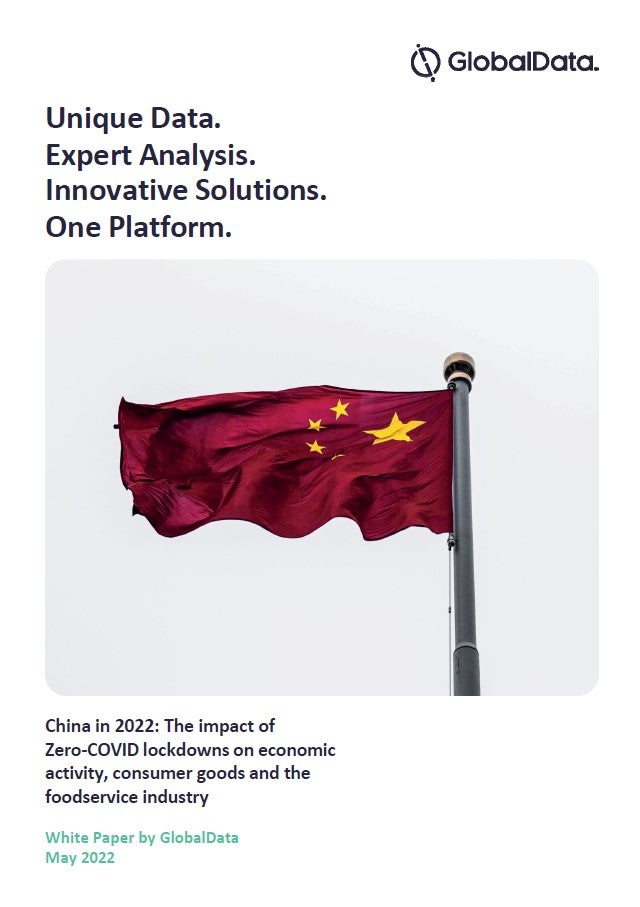
The consumption of chocolate in China continues to rise, offering opportunities for international manufacturers – but also for ambitious domestic players, Peter Peverelli writes.
When I first went to China in the 1970s, chocolate was an expensive treat, out of the reach of the average consumer. Per capita consumption is still under 1kg (compared to 8.8kg in Switzerland or 7.6kg in the UK).
How well do you really know your competitors?
Access the most comprehensive Company Profiles on the market, powered by GlobalData. Save hours of research. Gain competitive edge.

Thank you!
Your download email will arrive shortly
Not ready to buy yet? Download a free sample
We are confident about the unique quality of our Company Profiles. However, we want you to make the most beneficial decision for your business, so we offer a free sample that you can download by submitting the below form
By GlobalDataIn China, chocolate is still regarded as a fancy gift to a good friend. A March 2017 survey from Industrial Information, a public portal of Chinese market research company Zhiyan Consulting, shows 68% of the chocolate purchased is bought for someone else.
According to Industrial Information, the market has been growing solidly in recent years, with sales standing at CNY12.15bn (US$1.77bn) in 2011 and CNY23.14bn in 2017. Domestic production, including Chinese and foreign-invested plants, has grown steadily, from 245,000 metric tons in 2011 to 479,000 in 2017. Import volumes show ups and downs: 65,567 metric tons in 2015, declining to 47.567 metric tons in 2016 but up to 54,283 metric tons in 2017.
Chinese prefer filled chocolates over solid types. It can be any type of filling, including liqueur. Last month, Chinese distiller Luzhou Laojiao launched chocolate filled with its own spirits.

Global brands are leading
Looking at market share data from Industrial Information, brands owned by international manufacturers lead the pack in China. In 2017, Mars’ brands accounted for 39.8% of sales by value, Ferrero enjoyed some 17.8% of the market, followed by Nestlé (at 9.7%), the Hershey at 8.6% and Mondelez at 3%.
Local competitors are finding it hard to establish a premier brand recognition and have adopted cheaper formulations to secure price competitiveness.
Domestic brands to note are Le Conté (with a market share of 0.8%) Shanghai Golden Monkey (with 0.6%) and Trésor Doré. From a consumer stand-point, the French names of two of these three domestic brands underline how Chinese consumers see chocolate as part of the fashionable Parisian lifestyle.
Trésor Doré does not feature in Industrial Information’s 2017 market share data but the owner of the Trésor Doré brand, the Chinese food manufacturer Liangfeng, is ambitious. Liangfeng’s website has a full English version, which is still rare in the Chinese food industry. If any global chocolate manufacturer wanted to acquire a suitable Chinese brand, Trésor Doré should be near the top of any shortlist. Trésor Doré seems to know what it is doing and where it wants to go but too small to reach its goals without the input of capital and market experience.
Le Conté used to be owned by the state-run China National Cereals, Oils and Foodstuffs Corp. (COFCO). It halted production in April 2016 and was then sold to Fujian-based confectionery maker Hollygee Foods Co. eight months later. A notable statement from COFCO’s management about the deal was: “as chocolate is a purely Western product, COFCO may also find it hard to compete with leading companies as well as emerging new foreign players”.
Another notable change in the ownership of one of China’s major homegrown chocolate brands came last year, when Hershey sold Shanghai Golden Monkey to local firm Henan Yuxiang Food Technology Co. Ltd.
Hershey bought 80% of Shanghai Golden Monkey in December 2013, a move that doubled the size of the US confectioner’s then business in China. Within 18 months, Hershey was moderating its expectations for the performance of its new Chinese asset. In August 2015, Hershey booked an impairment charge of US$100m on the business amid “disappointing” results.
In February 2016, Hershey acquired Shanghai Golden Monkey outright. However, Hershey made four downgrades to its sales forecasts throughout 2016 and China was a central factor for both internal reasons and challenges in the wider market.
Hershey told just-food in July the disposal was part of its “growth strategy” for its business outside the US. A spokesperson said China “is one of the most important markets for Hershey globally”.
Chocolate brands from Russia are starting to enjoy an increased presence, representing another set of competitors for western manufacturers. Food is a central product group in the growing economic relations between these two giant neighbours and Russian chocolates are benefiting disproportionally from this development. A brand to note is Krokant, a caramel almond crunch coated with chocolate, noted by its purple wrapper.
A 2017 survey from the Chinese website marketingtochina.com shows the number one factor local consumers consider when buying chocolate is taste (30%), following by brand (18%) and price (7%).
Although taste appears in first position, this 30% indicates Chinese consumers don’t care about it nearly as much as Western consumers. Chocolate is still a foreign product and as long as something has a cocoa flavour, most Chinese will recognise it as chocolate.
Chinese love famous brands. They show off with their branded clothes and accessories and do so with branded foods as well. For young Chinese men, luxurious chocolates are a must to show their love to their girlfriends. During the Chinese Valentines’ Day, half of the top 10 items sold online are chocolates.

“Competition with domestic brands will be fierce”
High prices are still linked to high quality in China. When imported chocolate first appeared in China, the price for a box was sky-high. Today, chocolate has become a common product that more and more people can afford. However, some chocolate brands are still famous for their high price. A good example is Ferrero, which targets the high-class chocolate market where price is an important tool to show its value.
The outlook
The consumption of chocolate in China is set to grow at a similar rate to previous years. Western manufacturers should, however, be aware of the nationalism playing a major role in politics in China at present. There has been a general nationalist trend seen in other industries in China, where domestic players fight to recoup a fair market share from their foreign competitors. Whenever foreign players become market leaders in China, the Government and business work together to ensure a certain amount – not insignificant – of market share either stays in (or flows back into) the hands of local companies. In the eyes of many in government and business in China, it would preferable for a multinational to acquire a domestic brand, support it on its home market and then introduce it on the global market.
Domestic chocolate production will keep rising at the same speed as during previous years. The market will remain lucrative for international brands but competition with upcoming domestic brands will be fierce. Protecting and enhancing the reputation of your brand will be vital.
If taking over a domestic brand is not part of your strategy, maintaining a high-end image will be relatively safe for some time but consumers in third- and fourth-tier Chinese cities may not be willing to spend their increasing discretionary income on very expensive chocolates. A multi-brand strategy in China – with a portfolio of products at different prices – will be vital. More price-competitive products can be more tailored for China, including some Chinese cultural traits, which could offset any threat to sales from consumer patriotism or nationalism.




